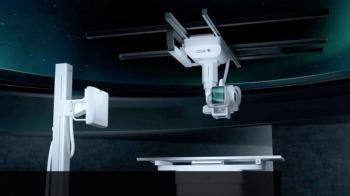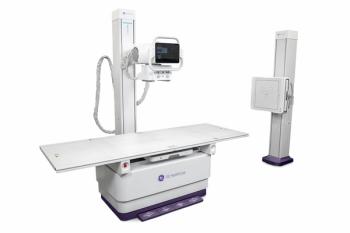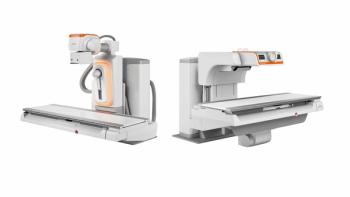
Agfa provides preview of new CR technologies
Techniques would cost less, improve speed, image quality Although developments with other digital radiography systems have captured much of the attention of the medical imaging community in recent years, vendors offering computed radiography
Techniques would cost less, improve speed, image quality
Although developments with other digital radiography systems have captured much of the attention of the medical imaging community in recent years, vendors offering computed radiography systems have been telling anyone who will listen that their modality should still be the method of choice for digital x-ray. And while CR has been available since the early 1980s, development work on the modality is by no means complete, as evidenced by introductions of low-cost CR systems in the last year by Lumisys (ACR-2000 DesktopCR), Fuji (FCR 5000R-E), and Agfa (ADC Solo).
Agfas commitment to the modality became fully evident when the vendor elected to pass on the digital radiography assets of Sterling Diagnostic Imaging during its acquisition of the firm earlier this year (SCAN 1/20/99). At the time, company executives pointed to technologies in its R&D pipeline that would make CR even more competitive with DR. These developments were presented to key customers and invited guests at the recent national meeting of the American Healthcare Radiology Administrators, where the Ridgefield Park, NJ-based vendor solicited comments about possible future directions for the technology.
Specifically, Agfa highlighted new scanhead technology, called Agfa SHT, that uses an integrated circuit design to allow the CR reader to function as an array of scanners, rather than as one single detector, said Ted Ciona, senior North American marketing manager for CR. This enables the detectors to completely scan the phosphor plate in five to eight seconds and achieve image resolution equal to existing systems, he said.
A new, higher quality plate design is being developed in tandem with the scanning technology, as well as an integrated erasure device, which allows the reader to scan and erase the plates on the same system. When employed, the new technology could allow Agfa to build a CR system 35 times smaller than its original ADC 70 unit, Ciona said.
Pending customer feedback on possible directions for its technology, Agfa expects to introduce CR systems employing the new techniques by the 2000 RSNA meeting, with commercialization expected by mid-2001. Although development of lower priced and single-plate systems is logical, the firm expects this technology would be suitable across the entire range of its product line.
The scanheads are so small now that we can build very small single-plate scanning devices and/or incorporate the technology into other CR systems, Ciona said.
Research on the technology was conducted at Agfa R&D centers in Mortsel, Belgium, and Munich, Germany. Agfa researchers also made a presentation describing the technology at the European Congress of Radiology in Vienna in March.
Were still focusing on CR, and putting a lot of research into it, Ciona said. We believe that much can still be done with the mechanics and image quality of CR systems.
Newsletter
Stay at the forefront of radiology with the Diagnostic Imaging newsletter, delivering the latest news, clinical insights, and imaging advancements for today’s radiologists.




























